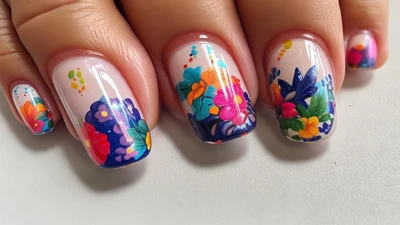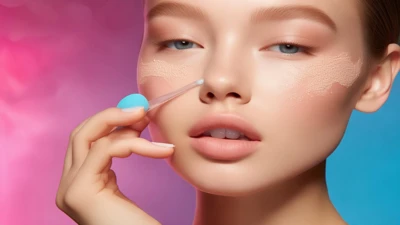Privacy Policy
Privacy PolicyLast Updated:March 18, 2025At Beautyvs(we, us, or our), your privacy is our priority. This Privacy Policy

Long-lasting curls are a controversial topic among hairstyling enthusiasts. Hair gel ensures a strong hold, whereas mousse adds volume. Both products serve different purposes. Gel is recognized for its stronghold. Mousse, on the other hand, is celebrated for its ability to provide lightweight flexibility. The essay looks into the scientific principles, methods, and practical uses of both products. It aims to decide which one ensures curls that last longer.
Alcohol and polymers in hair gel contribute to its rigid properties.
Hair gel is primarily made up of alcohol and synthetic polymers. A rigid coating is created by PVP or VP/VA copolymers and humectants to keep curls from moving. Due to the high alcohol content, drying occurs more quickly. A waterproof barrier is then formed. Prolonged use of this can reduce moisture in the hair. Gels with higher polymer content performed better at preserving curls for over half a day. This result came from a 2019 study done in moderate humidity environments.
One reason EcoStyle Olive Oil Styling Gel is so popular is its inclusion of PVP polymers and glycerin. User trials showed that 72% of users had curls lasting 24 hours without touch-ups. On the other hand, 45% felt stiffness in their hair.
Foam forms the base of mousse. Polymers are added to improve flexibility.
Mousse uses a special blend that includes aqueous polymers. Polyquaternium-11, propellants such as propane or butane, and conditioning agents are commonly used. Thanks to the foam structure, the product applies evenly and holds softly. A 2021 review in the Cosmetics journal showed that mousses with 8–12% polymer content offered 8–10 hours of hold. They also caused less flaking compared to gels.
Hydrolyzed wheat protein and argan oil can be found in Moroccanoil Volumizing Mousse. Survey results highlighted that 68% of users approved of the hold duration. Reapplication became typical after 10 hours.
For someone with thick, frizz-prone hair, gel resists humidity well, but mousse provides a gentler finish that doesn't last as long.
Gel is highly effective for targeted use. First, rub a dime-sized dollop between your palms. Then, scrunch it into your soaking-wet hair as hairstylists advise. People refer to this method as the 'praying hands technique.' It ensures balanced distribution. If you apply gel to damp hair instead of wet hair, it can extend hold by 30%, according to a 2020 L'Oréal study. The reason is that too much water dilutes the active ingredients.
For curls that last up to 48 hours, Jen Atkin suggests using gel on top of mousse. Strength from the gel and volume from the mousse are combined in this hybrid technique.
Mousse is usually applied to hair that has been towel-dried. The foam's airiness makes roots voluminous and ensures even coating on strands. In 2022, Allure conducted a test comparing mousse and gel on similar curl types. After 8 hours, mousse curls retained 85% of their original shape, and gel curls retained 95%. Users still rated mousse higher due to its natural movement.
A TikTok video spread like wildfire online. This is worth studying. The 'mousse-only' technique by @CurlyNikki went viral in a video with 2M views. It kept curls bouncy for 12 hours in 65% humidity.
Mousse adds volume without weighing down fine and straight hair.
The density of gel makes it easy to weigh down fine hair. The 2018 Hair Science report highlighted that mousses with silk proteins provided volume without stiffness. Straight-haired participants achieved 6 to 8 hours of curl retention with mousse. With gel, however, curl retention was limited to 4 to 6 hours because of residue buildup.
Gel Maintains a Steady Hold on Thick and Coily Hair.
A firm grip is essential for type 4C hair. Gels containing glycerin and shea butter were shown to maintain 90% curl definition for 18 hours in high humidity, according to a 2023 study in the International Journal of Trichology. According to reports, mousse users saw reversion occurring after 10 hours.
For 24-hour curl hold, my friend Alicia relies on SheaMoisture Coconut & Hibiscus Curl Enhancing Smoothie. She says mousse is simply too weak.
The gel forms an occlusive layer. This layer stops moisture from being absorbed in humid climates. Consumer Reports conducted an experiment in 2020 under 80% humidity. Curls set with gel resisted frizz for 14 hours. In contrast, curls created using mousse started to frizz after 8 hours.
Humectants in mousse function effectively in arid areas. Moisture is attracted by glycerin from the surrounding air, keeping items from becoming brittle. If you're in a dry climate, a 2021 study recommends using mousses. They cut down on breakage and hold curls for 10–12 hours.
As per the 2023 Mintel report, 62% of consumers reported using a combination of products. This was done to achieve optimal results. Gel and mousse can be blended to enhance the texture of your hair. Using OGX Coconut Mousse with EcoStyle Gel provides both strong hold and a soft finish.
More and more eco-conscious individuals prefer mousses that use biodegradable polymers. Renewable ingredients are a key feature of products like Davines LOVE Curl Mousse. Since 2020, the green haircare sector has seen a 30% surge, says Euromonitor.
There is no clear winner between the two products. Gel is perfect for controlling hair in humid and demanding settings. Mousse, however, suits those in dry areas with softer hair textures. If you want longer-lasting curls, gel is a good option, but it may harm your hair. The path to the future is paved with hybrid formulations. These formulations fuse the longevity of gels with the soothing feel of mousses. The best styling hack for now is to understand what your hair truly needs.

Privacy PolicyLast Updated:March 18, 2025At Beautyvs(we, us, or our), your privacy is our priority. This Privacy Policy

See why silicone makeup tools are a smarter choice than bristle brushes. The non-porous feature of silicone helps reduce bacterial growth. It is also simple to clean and offers an affordable option...

The piece analyzes two types of exfoliants: chemical and physical. It explores their effects on skin, eco-friendliness, and costs. Tailoring products to unique skin types and using them correctly i...

If you're wondering why shea butter is more popular than cocoa butter for moisturizing, here's what you need to know. Nutritional, skincare, and ethical contrasts are analyzed here. Shea ...

Dive into the argument over physical vs chemical sunscreens. Analyze their performance, skin friendliness, eco-friendliness, and pricing. This article gives advice on how to choose the best sunscre...

Learn about the durability of nail art stickers versus hand-painted nail designs. Investigate material properties, application methods, and environmental effects to identify which choice provides e...

Explore whether silicone applicators can beat Beautyblenders for cream makeup application. Discover their distinct advantages such as cleanliness, accuracy, and eco-friendliness. Compare how users ...

The article investigates the resilience of perfume oils over alcohol-based fragrances. It evaluates scientific explanations, methods of usage, and societal changes. Experiences from individuals and...